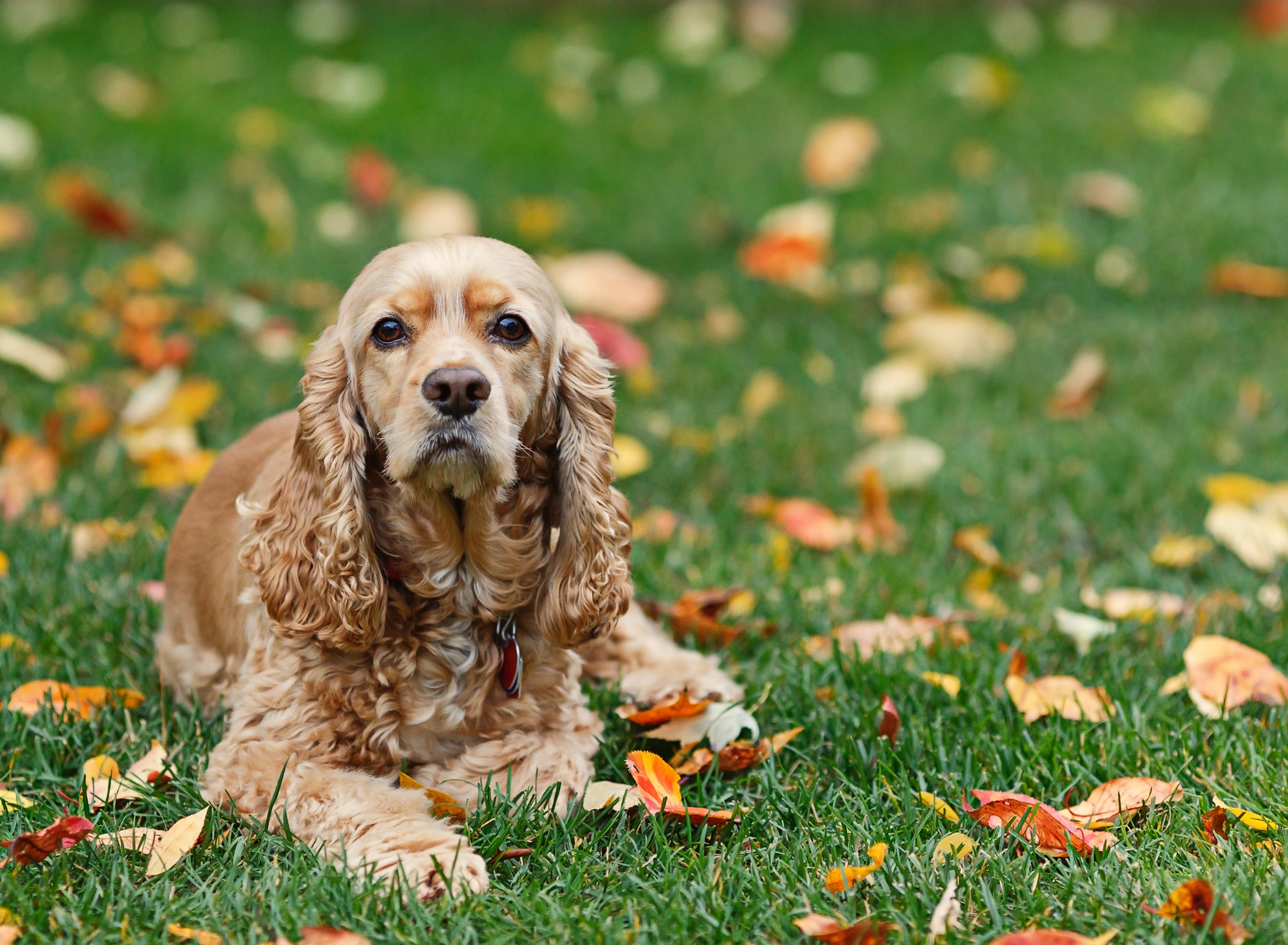American Cocker Spaniel
Unlike their English cousins, American Cocker Spaniels are a touch smaller with a more rounded head. Their signature feature is their luxurious, flowing coat. Athletic and ready to explore in the countryside with their owners, the American Cocker Spaniel dog is a playful and cheerful companion.
Breed characteristics carousel
Learn More
Need to Know
- Great for first-time owners
- Basic training required
- Enjoys active walks
- Small dog
- Some drool
- Requires regular grooming
- Chatty and vocal dog
- Welcoming
- Generally friendly with other dogs
- Gets along with other pets with training
- Great family dog
- Needs a small yard
- Can live in suburban areas
- Can be left alone occasionally with training
- AKC Registered Breed

Personality
The American Cocker Spaniel breed is a playful and energetic companion. These cheerful pups are brimming with confidence and abundant intelligence. American Cockers thrive in families with plenty of love, exercise, and training.
Early British settlers likely brought working and hunting dogs, including spaniels, on their journey across the Atlantic Ocean in the early 1600s. Historical records mention a spaniel type on the Mayflower, but it wouldn't have been the clearly defined cockers we know today. American Cocker Spaniels were bred for flushing and retrieving game birds, although they’re more likely to be found romping alongside their owners now.
American Cockers are energetic but may have a sensitive side, so a calm and patient owner is ideal. Training is important to curb their natural instincts and prevent any unwanted behaviors. It’s a bonus if Cocker Spaniel owners enjoy grooming too, as those luscious locks need a bit of TLC.
Don't let their glamorous looks fool you: American Cocker Spaniels are athletes at heart. Give them a well-rounded workout by combining walks and runs. They like water too, so you might try introducing your Cocker gradually to water. Mental stimulation is key too; they love training sessions and games. Add an activity that taps into their natural talents for sniffing out scents and fetching, and they’ll be even more thrilled.
While American Cockers are on the smaller side, they still need some room to let loose. Regular access to a yard or park will make them happy—and more importantly, exhausted. These chatty dogs also love to hear themselves bark, so apartments with close neighbors might not be ideal. Otherwise, they're happy campers in both suburban and country settings.
To maintain their luxurious look, daily brushing, and regular trimming are essential. American Cocker Spaniels also need daily checkups on their ears, eyes, lip folds, and feet to prevent any irritation. Get them used to grooming routines early, so they know what to expect. A full bath and blow-dry can take several hours, so plan accordingly.
The American Cocker Spaniel breed is eager to please. They are quick learners which makes training a breeze. They have a natural love for carrying things which makes them star retrievers, but you’ll want to make sure to teach them to drop or leave items. Beyond basic obedience, versatile American Cocker Spaniel puppies excel in dog sports and activities like agility and scent work.
American Cocker Spaniel dogs are fantastic companions for active families who love the outdoors. However, waiting for children to be a bit older ensures a safe and harmonious relationship for everyone in the family—both dogs and people.
The cost of an American Cocker Spaniel from a breeder is significantly more than the cost of adopting one from a local shelter or rescue. The adoption fee usually covers additional items such as spaying or neutering, vaccines, and microchipping.

Learn more about feeding and caring for your American Cocker Spaniel on Purina.
Did You Know?
- “Lady and the Tramp” features an animated American Cocker Spaniel as the lead female dog.
- Oprah Winfrey, Richard Nixon, and Charlize Theron have all owned American Cocker Spaniels.
- The breed is commonly used as a therapy dog because of their kind and happy nature.

